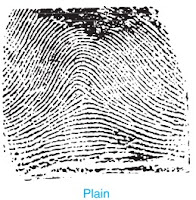Bakelite and Novolac- Phenol Formaldehyde Resins
What are Phenol formaldehyde resins?
Phenol formaldehyde resins (PF) or Phenolic resins are the oldest synthetic polymers. These are obtained by condensation of phenol with formaldehyde in the presence of either an acid or a base catalyst.
Phenol formaldehyde resin possesses excellent adhesive properties and is usually used as bonding glue. They can withstand very high temperatures and are resistant to non-oxidizing acids, salts, and many organic solvents.
Examples of Phenol formaldehyde resins
Following are the most common examples of Phenol formaldehyde resins:
1. Bakelite
Bakelite is a thermosetting phenol-formaldehyde resin that was developed by Belgian-American chemist Leo Baekeland in 1907. Bakelite is a cross-linked condensation copolymer that is prepared by a condensation reaction of phenol with formaldehyde in the presence of either acid or base catalyst.
Preparation of Bakelite
The reaction begins with the formation of o- and p-hydroxymethyl phenol derivatives which further react with phenol to form compounds containing rings joined to each other through methylene (-CH2-) bridges. The initial product is a linear polymer called novolac which on further heating with formaldehyde undergoes cross-linkage to form an infusible solid called Bakelite.
Properties of Bakelite
1. It can be quickly molded and very smooth molding can be obtained from this polymer.
2. Bakelite moldings are heat-resistant and scratch-resistant. They are also resistant to several destructive solvents.
3. Bakelite is resistant to electric current due to its low electrical conductivity.
4. Bakelite comes in both a low degree of polymerization which is soft and a high degree of polymerization which is hard and rigid.
Applications of Bakelite
1. Soft Bakelite with a low degree of polymerization is used as binding glue for laminated wooden planks and in varnishes and lacquers.
2. It is used for the manufacture of combs, Formica table-tops, fountain pen barrels, phonograph records, computer discs, etc.
3. It is widely used in making electrical goods like switches, plugs, handles, or various utensils due to its electrical insulating property.
4. Sulphonated Bakelites are used as ion exchange resins.
2. Novolac
Novolac is a low molecular weight linear polymer that is prepared by condensation of phenol with formaldehyde in the presence of either an acid or a base catalyst.
Preparation of Novolac
The reaction begins with the formation of an o- end/or p-hydroxymethyl phenol derivatives which further react with phenol to form compounds containing rings joined to each other through methylene (-CH2-) bridges. The product is a linear polymer called Novolac.
Applications of Novolac
1. Novolac is used as a binder for carbon bonded refractories.
2. Novolac is used as a curing agent for epoxy resins.
3. It is also used in paints.






